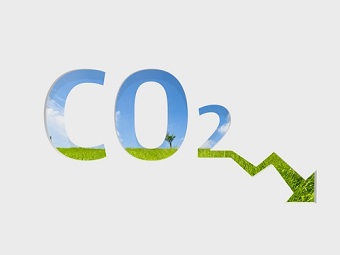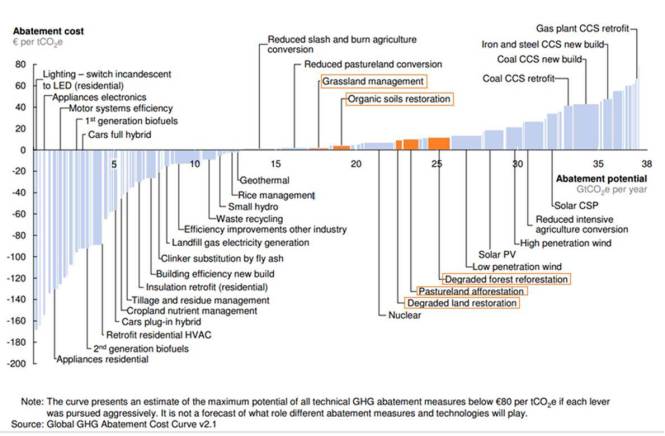September 29, 2014 – The carbon capture and storage (CCS) project at the Boundary Dam in Saskatchewan is about to go live as reported in the press today. The project goal has been to eliminate 90% of the CO2 generated by the coal-fired power plant. Additions have cost $1.4 billion CDN, $115 million over budget, and represent what is believed to be the world’s first commercial-scale CCS project to go live.
What does $1.4 billion buy you? The removal of about 1 million tons of CO2 from the atmosphere each year. Of course, closing the coal-fired power plant would remove even more but that’s not in the equation for now. Although at some point as we come to terms with a low carbon economy it may very well come to pass.
What will happen to that CO2? Some of it will be liquified, transported through a pipeline and then stuck underground in rock where it will be permanently sequestered. Some of the CO2 will get sold to fossil fuel operators to be pumped into older oil fields to improve yields.
The plant has also built into its outflow gas waste management a sulfur dioxide capture technology that converts the gas to sulfuric acid for sale to industry. And finally, the last component in the outflow gas, the fly ash, is also captured for sale to concrete producers.
All in all this is pretty impressive technology for mitigating CO2 but we need to seriously question the rationale for spending so much to justify keeping coal-fired power plants in operation. That’s because CCS is the most expensive approach we can take to CDR, carbon dioxide removal.
There are many CDR strategies we can deploy in pursuit of a low carbon economy. Many don’t require a $1.4 billion investment. With CCS at the high-cost end of CDR strategies, what is there at the low end that we can deploy?
The global management consulting firm, McKinsey & Company, as part of its practice has created a greenhouse gas abatement curve which I have reproduced below, The areas indicated in orange represent relatively inexpensive biological CDR techniques providing significant dividends.
In addition the activities on the left, the conservation side, can immediately create CDR benefits through decreased energy demand. These include replacing energy inefficient consumption technologies such as incandescent lights and internal-combustion-engine transportation.
The biological techniques for CDR involve little in the way of expended dollars. Instead much of it is about behavioral change. Better livestock land use techniques help restore grasslands with the benefits of an expanded carbon sink, reduced desertification, restored freshwater balance, and increased biodiversity.
Reforestation of boreal and tropical rainforests creates immense carbon sinks, second only to the ocean. It is estimated that worldwide deforestation today is contributing to 15% of all CO2 emissions. Steps like the one announced in the last week involving Norway agreeing to pay $150 million USD to Liberia to stem deforestation represent a novel financial approach to implementing biological CDR. This type of strategy is just part of a much larger holistic land management movement first proposed more than a half-century ago.















As I can understand this carbon capture scheme, it will be burning coal to produce heat and electricity to separate and liquefy CO2 in the boiler exhaust emissions. Any electricity in excess of the CCS process requirements would go into the power grid. The CO2 is then used to produce more oil from declining pressure-drive petroleum reservoirs, which will increase oil supplies and hold down prices, thus encouraging more global oil consumption by “sequestering” CO2 obtained by burning extra coal. Obviously some of the extra oil production from extra coal combustion will be burned in the ICE trucks that haul the cryogenic CO2 from the coal burning plant to the oil fields. History has shown that a 3% supply glut can produce as much as a 30% decline in petroleum market price.
Perhaps, if the CCS scheme can be made to work at all, the net effect would be greater coal combustion, higher electric rates, and more petroleum combustion. More likely, the scheme could only be implemented through drastic government mandates, and the combustion of coal in the first world would be discontinued and replaced with NG. Coal prices would fall and domestic producers would export to the third world, where the coal would be burned with minimal emission standards. Wouldn’t just one day’s worth of all the world’s coal plant’s CO2 emissions satisfy the entire global LCO2 demand for the next year? Suppose only 1% of the coal-fired power plants are capturing and liquefying their CO2, wouldn’t the CO2 supply immediately glut and market prices collapse? What is not to like? This seems a technology that will go only so far as technically incompetent and ethically corrupt governments are prepared to pay for it.
Hi Allen, I think CCS is a make work project to justify continuing to support coal mining and coal-fired power generation. Your comments very much point out the long-term lunacy of CCS in association with coal. If we are to develop CCS to harvest CO2 from the atmosphere then I would see some merit in it. But the only way the CCS developed here works is having CO2 available in large quantity. We need a CCS that works like trees. Hey! Wait a minute, we have trees. Why not plant more?